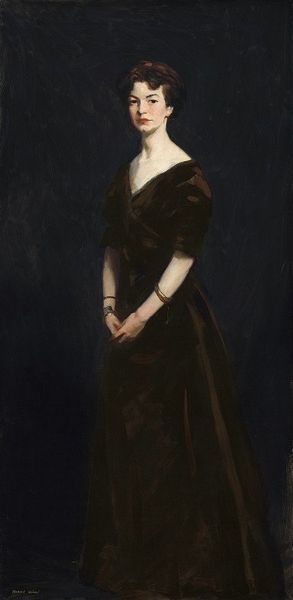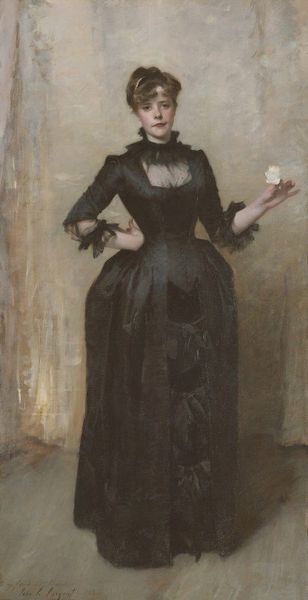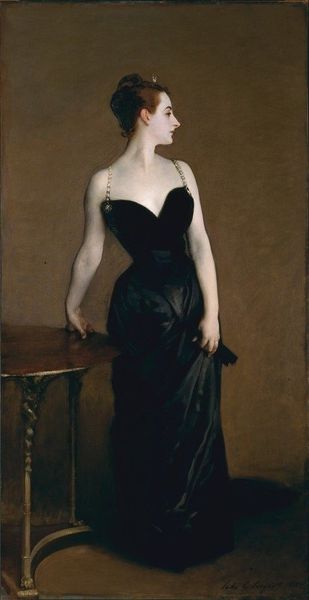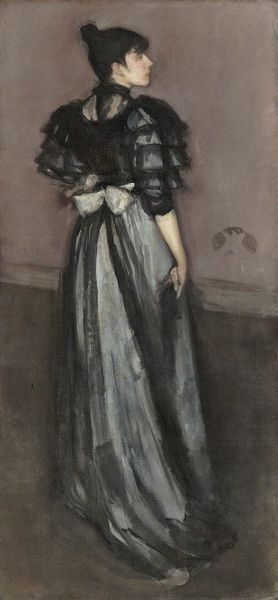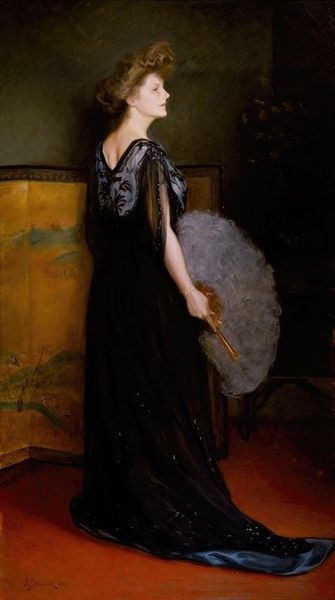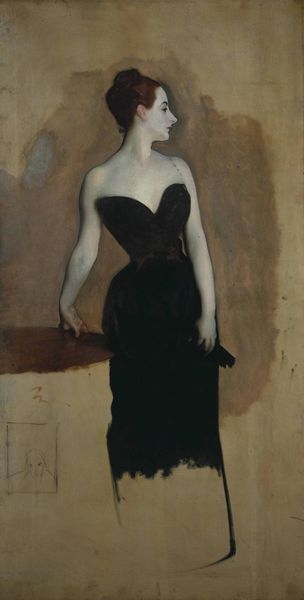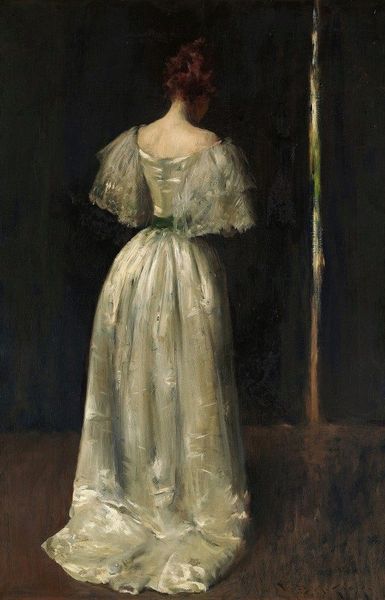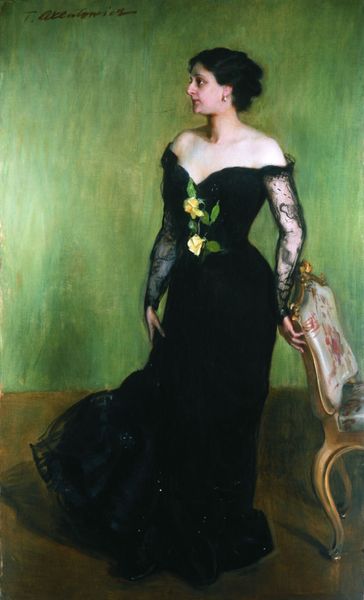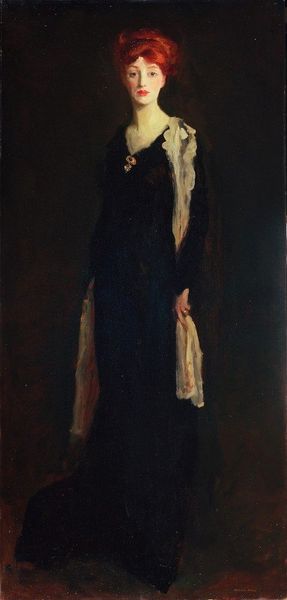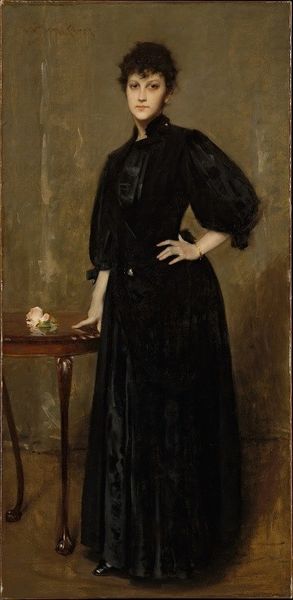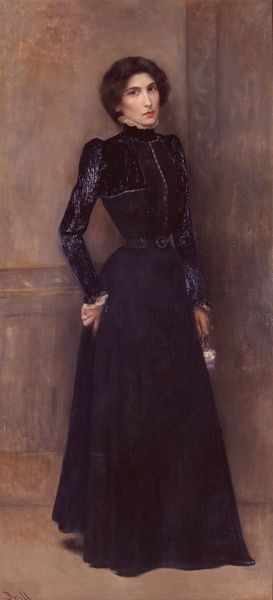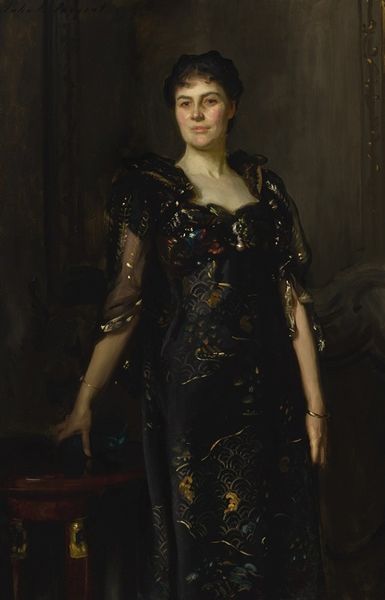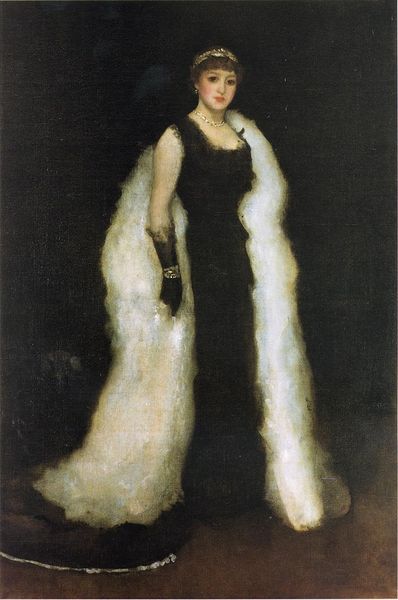
Copyright: Public Domain: Artvee
Curator: My initial reaction is that this is so serenely sad, or sadly serene. All those subtle shades of grey, and then that one great blast of white. It reminds me of a cloudy day suddenly pierced by sunlight. Editor: Here we have John Singer Sargent's portrait of Mrs. Albert Vickers from 1884, rendered with oil on canvas. A beautiful, subdued piece, and there is so much to say about its presentation of Victorian ideals of womanhood. Curator: Indeed! Though I get the feeling Mrs. Vickers had more to her than just being ornamental. Her gaze is remarkably direct, isn’t it? And that simple, almost severe dress… I bet she wasn’t afraid to speak her mind. Editor: Yes, it's a complex depiction. The dress, while appearing simple, signifies social standing through its quality fabric and careful tailoring. The color choices too – the muted greys and blacks, while fashionable, suggest a certain level of restraint, typical of upper-class Victorian women. There's this constant push and pull between outward performance and inward identity. Curator: Do you think she picked those magnolias herself, carefully arranging them as some form of...rebellion? Like a fragrant, silent protest against being just a pretty portrait? I can almost smell them. Editor: That's an intriguing perspective, interpreting the flowers as a gesture of subtle defiance! What is interesting is the historical association of magnolias. Symbolically, magnolias embody dignity and nobility; so, in the social context of the era, Mrs. Vickers is not simply holding flowers but broadcasting social status. Her beauty and breeding are supposed to make her valuable. Curator: And she gazes right through you, doesn't she? The lighting feels so precise here too, doesn't it, and you think about how posed this moment is! Like, what might she do just a second *after* the painter stopped painting? I am filled with curiosity... Editor: Right. And that gaze meets us through the layers of gendered, racial and socioeconomic context—the politics and the artistry of it all! Thanks to that awareness, the artwork, at least to me, achieves resonance today. Curator: Beautiful. I leave her now with new admiration—knowing the hidden intricacies layered underneath those grays! Editor: Absolutely. Sargent encourages us to look closely at the details, understanding not only what is visible, but the greater implications held within portraiture and representation.
Comments
No comments
Be the first to comment and join the conversation on the ultimate creative platform.
